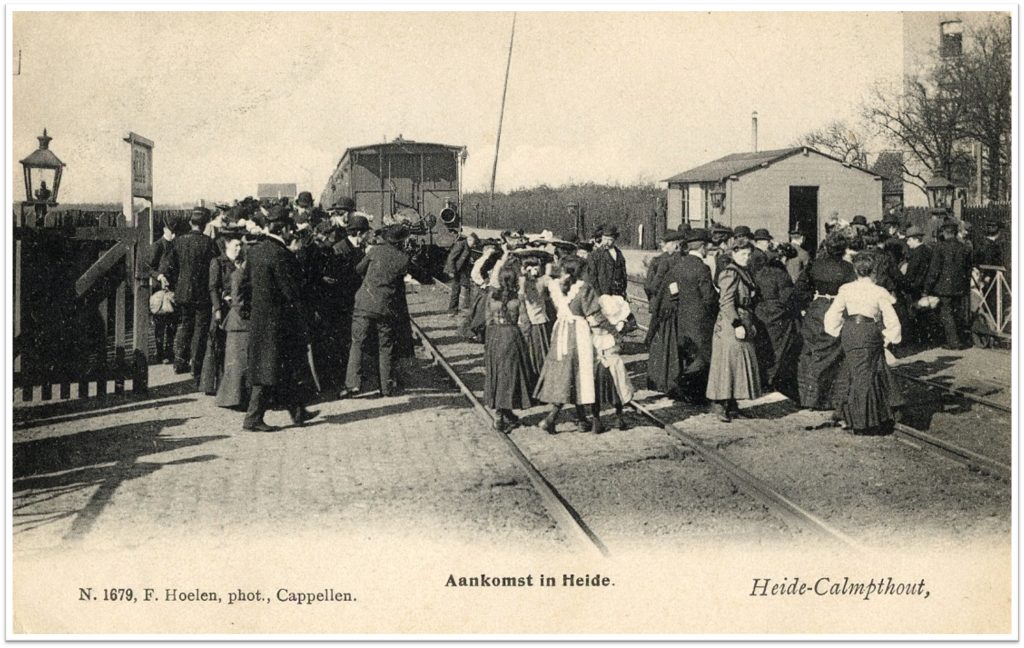Project MONA: Harmonizing Nature, Mobility, and Tourism at Grenspark Kalmthoutse Heide
The vastness and tranquillity in nature reserve Grenspark Kalmthoutse Heide has inspired hikers, cyclists, horseback riders and artists for decades. In 1854, the very first train brought the first peace seekers to the heathland via the newly constructed Railway Line 12. This connection allowed our ancestors to escape the hustle and bustle of urban life. Still today, thanks to the smooth connection with the train and bicycle highway Antwerp-Roosendaal, Grenspark Kalmthoutse Heide fulfills the role of the largest quiet garden of the province of Antwerp. Still, a large number of visitors use the car to visit the park, which creates parking pressure and inconvenience for local residents. Thanks to the European subsidy program Interreg, Grenspark Kalmthoutse Heide, together with municipalities and partners, can work on a modal shift and a (re)design of existing train stations and entry gates to better disperse recreational pressure. This project is part of the broader European effort, called MONA, which aims to promote sustainable tourism in Northwest Europe’s nature areas. The project will run between 2023 and 2027.

Central to the project’s mission is the promotion of sustainable practices and a modal shift in transportation choices. By championing soft mobility solutions such as electric bicycles, trains, and buses, Grenspark Kalmthoutse Heide and its partners seek to minimize vehicular traffic’s impact on the environment. This involves a concerted effort to enhance connectivity between existing bus and train stations and the park’s entrance points, facilitated by innovative measures like shuttle services and communal bicycles. Moreover, the project envisions a seamless transition from stations to the natural expanse, integrating this “last mile” into the visitor experience. Route directions and targeted communication about zoning nudge visitors towards more sustainable behaviour. With this sustainable course, Grenspark aims to reduce parking pressure around the fragile nature and nuisance to local residents.
An important part of the MONA project consists of monitoring, research and analysis. BUas (Breda University of Applied Sciences) and KU Leuven are connected as knowledge partners to collect data. It is also measured whether actions taken have an effect. VisitBrabant is therefore setting up monitoring of the use of routes and crowding in specific nature areas, at specific times. This information can be useful in the consideration of relocating or upgrading routes.
In addition to better connectivity and sustainable transportation, the project also focuses on sustainable and barrier-free tourism. A better infrastructure and redesign of footpaths, reception gates,… should ensure a barrier-free visit. Routes of user groups (e.g. equestrians) can be further developed.
This project is realized in cooperation with the following partners: Np Van Gogh (NL), Utrechtse Heuvelrug (NL), NP Veluwezoom (NL), Grenspark Kalmthoutse Heide (BE-NL), Parc Naturel Régional de la Montagne de Reims (FR), Parc naturel Régional Scarpe Escaut (FR), KULeuven (BE), Breda University of Applied Sciences (NL), Polis (BE), Tourismus Zentrale Saarland (GE), VisitBrabant (NL), Toerisme Provincie Antwerpen (BE).
With this innovative project we are taking steps together towards a sustainable future for Grenspark Kalmthoutse Heide, where nature conservation and recreation go hand in hand. More information about the project can be found here.






